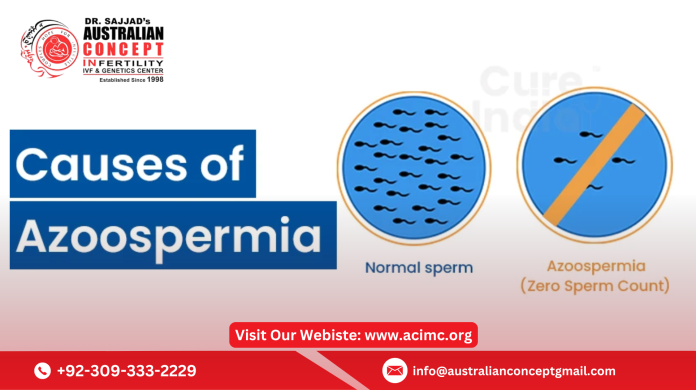Introduction:
Azoospermia complete absence of sperm in the semen can be a shocking diagnosis for men hoping to become fathers. However, advances in medical science offer hope. Before any azoospermia treatment can begin, doctors must understand the root cause of the condition. That’s where a detailed series of diagnostic tests comes in.
Why Are Tests Necessary?
Azoospermia may result from two main types of issues:
- Obstructive azoospermia (OA): The testes produce sperm, but a blockage prevents it from appearing in the semen.
- Non-obstructive azoospermia (NOA): The testes fail to produce sperm or produce extremely low numbers due to hormonal, genetic, or structural causes.
Identifying the exact type and cause is critical because each type requires a different treatment approach.
Key Tests Performed Before Azoospermia Treatment
1. Semen Analysis (at least two times)
- Purpose: Confirms absence of sperm in the ejaculate.
- Process: A sample is collected after 2–7 days of abstinence and examined under a microscope.
- What it shows: Sperm count, motility, morphology, and semen volume. If no sperm are seen, the test is repeated to rule out temporary factors.
2. Physical Examination
- Purpose: To assess the size and consistency of the testicles, presence of a varicocele, and any signs of blockage.
- What it shows: Clues about whether the condition is obstructive or non-obstructive in nature.
3. Hormone Level Testing
- FSH (Follicle Stimulating Hormone): Elevated in non-obstructive azoospermia, low or normal in obstructive types.
- LH (Luteinizing Hormone): Helps assess testosterone production.
- Testosterone: Important for sperm production; low levels may indicate hormonal imbalance.
- Prolactin: Elevated levels can impact sperm production.
- TSH (Thyroid): Abnormal thyroid function may also affect fertility.
4. Genetic Testing
- Purpose: To detect chromosomal abnormalities or Y-chromosome microdeletions that impact sperm production.
- Types:
- Karyotyping: Detects conditions like Klinefelter syndrome.
- Y-Chromosome Microdeletion Testing: Identifies missing genetic material essential for sperm production.
- CFTR Gene Mutation Test: Checks for mutations in the cystic fibrosis gene often associated with congenital absence of the vas deferens in obstructive azoospermia.
5. Scrotal Ultrasound
- Purpose: Visualizes the testes and epididymis.
- What it shows: Detects structural abnormalities, varicoceles, or blockages in the reproductive tract.
6. Transrectal Ultrasound (TRUS)
- Purpose: To examine the prostate, ejaculatory ducts, and seminal vesicles.
- What it shows: Helps identify blockages or abnormalities that could cause obstructive azoospermia.
7. Testicular Biopsy
- Purpose: Confirms sperm production inside the testes.
- Process: A small tissue sample is taken under local or general anesthesia.
- What it shows: Whether sperm are being produced (but not reaching the semen) or not being produced at all.
- Note: Sometimes performed during sperm retrieval for ICSI.
8. Sperm DNA Fragmentation Test (in rare cases)
- Purpose: Measures the quality of sperm DNA.
- When used: Usually reserved for cases where sperm is found during biopsy but conception has failed in prior attempts.
What Happens After the Tests?
Once all test results are available, your fertility specialist will classify the azoospermia as obstructive or non-obstructive and recommend the most suitable treatment. Options may include:
- Hormone therapy
- Surgical correction (e.g., varicocele repair or blockage removal)
- Sperm retrieval (TESE, PESA, MESA)
- Assisted reproductive technologies like ICSI
Emotional and Psychological Considerations
Undergoing tests for azoospermia can be stressful. It’s important to remember:
- A diagnosis is not the end—many men with azoospermia become biological fathers through advanced treatment.
- Counseling and support can help couples deal with emotional stress during the diagnosis and treatment journey.
Conclusion:
Before any effective azoospermia treatment can begin, a series of thorough tests must be performed to understand the root cause. These tests from semen analysis and hormone tests to ultrasounds and genetic screenings play a vital role in shaping a personalized and successful treatment plan.
If you or your partner has been diagnosed with azoospermia, consult a fertility specialist who can guide you through this diagnostic journey with clarity and care. With the right evaluation, treatment, and support, the dream of fatherhood is still within reach.
For More Details: https://acimc.org/ivf-lahore/

